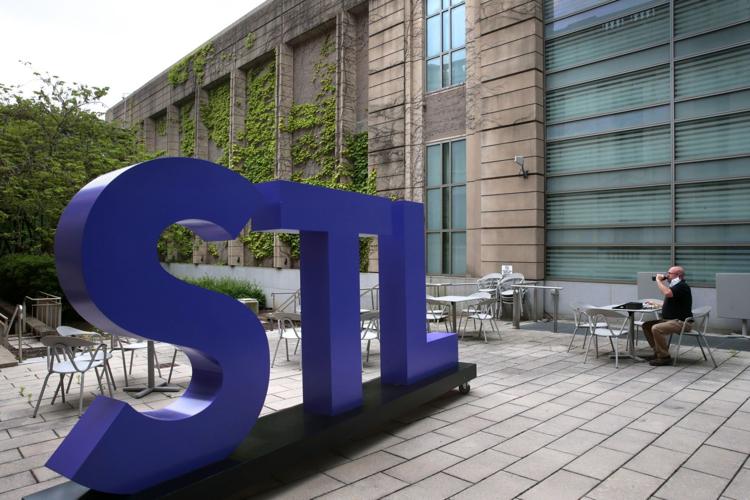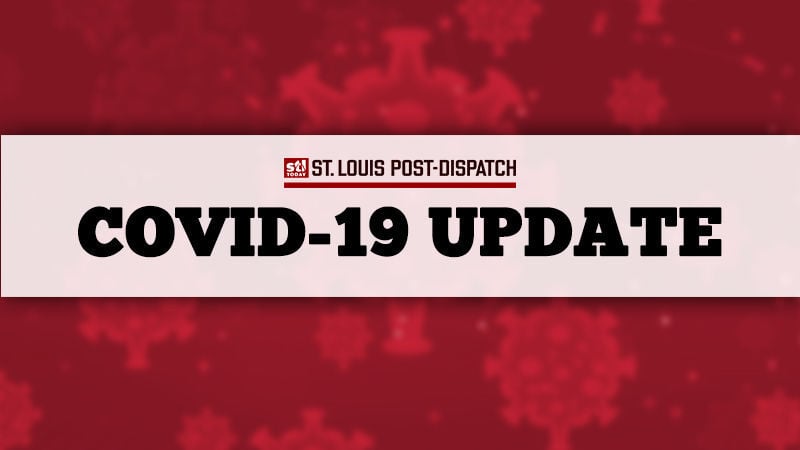ST. LOUIS ŌĆö Labor Day marked the end of a summer unlike any other in recent memory for the ėŻ╠ę╩ėŲĄ area, filled with dramatically altered traditions, cancellations and ŌĆö to the disappointment of health officialsŌĆö persistently high case totals of COVID-19.
By the Monday holiday, MissouriŌĆÖs average daily case counts were nearly eight times higher than on Memorial Day, May 25, when residents were just beginning to emerge from weeks of stay-at-home orders. Deaths in that time have more than doubled.
In Illinois, the average daily case count over the same time initially dipped, falling almost 400% in June, but steadily rose through July and August and has since returned to Memorial Day levels.
The rising numbers in both states this summer have been driven by more social interactions, rising cases among younger people and outbreaks reaching rural counties previously untouched by the virus, according to health officials.
People are also reading…
In response, state and local governments have established an ever-changing patchwork of restrictions and initiatives aimed at reversing the trends before the region heads into autumn.
Heading into Labor Day weekend, Dr. Anthony Fauci, the nationŌĆÖs top infectious disease expert, named Illinois and Missouri among seven states ŌĆ£at risk of surgingŌĆØ after the holiday weekend.
ŌĆ£Those states are starting to see an increase in the percent positive of their testing,ŌĆØ Fauci told Bloomberg News this week. ŌĆ£That is generally predictive that thereŌĆÖs going to be a problem.ŌĆØ
In total, MissouriŌĆÖs count rose from 12,167 to 93,434 confirmed COVID-19 cases this summer from Memorial Day to Labor Day. Deaths in that time went from 685 to 1,659.
Some of that rise comes from about a 90% increase in testing in Missouri this summer, but the average percentage of tests coming back positive also skyrocketed from about 3% at the end of May to 13.8% Monday.
NOTE: On Thursday, Nov. 18, 2021, the Missouri Department of Health and Senior Services (DHSS) changed how it reports COVID-19 cases and deaths. The department began counting reinfections as new cases, and added epidemiologically linked cases to its counts.
On April 17, 2021, DHSS adjusted a database error that was causing individuals with both a positive PCR and antigen result to be counted as both a probable and confirmed case. This correction removed 11,454 cases that were counted twice in previous probable antigen cases, according the notation.
Beginning March 8, 2021, DHSS began posting county-level data showing "probable" COVID-19 cases detected by antigen testing. Using the historical data from the DHSS dashboard, we reconfigured this graph to include that number in the total.
Missouri updated its data dashboard on Sept. 28. 2020, to delete duplicate cases. This resulted in a decrease of total cases which caused the daily count to reflect a negative number.
Illinois hasnŌĆÖt seen as steep a rise, but it passed a benchmark of 250,000 confirmed COVID-19 cases on Monday. Since Memorial Day, the stateŌĆÖs count rose from 112,017 to 250,961 cases and deaths increased to 8,179 from 4,884. IllinoisŌĆÖ average positivity rate remained at about 4.2% Monday, but the Metro East region was at 9.7%.
Memorial Day mania
The numbers are not what health experts had hoped for this summer, but signs appeared early that people were willing to return to up-close-and-personal social gatherings despite the pandemic threat.
Missouri lifted its stay-at-home orders May 4, while ėŻ╠ę╩ėŲĄ and ėŻ╠ę╩ėŲĄ County kept those restrictions in place until May 18.
A week after the orders lifted in ėŻ╠ę╩ėŲĄ, Missouri made the national news over Memorial Day weekend when videos of large crowds gathered at pool bars in the Lake of the Ozarks circulated online. In response, ėŻ╠ę╩ėŲĄ Mayor Lyda Krewson and ėŻ╠ę╩ėŲĄ County Executive Sam Page issued travel advisories requiring anyone who had visited the lake over the holiday to self-quarantine for two weeks.
In Illinois, Gov. J.B. Pritzker kept stay-at-home orders in place through the end of May. Even so, Pritzker said he was ŌĆ£dismayedŌĆØ over large weekend gatherings Memorial Day weekend, including reports of large crowds in Lake Geneva, Wisconsin, a popular weekend destination near the Illinois-Wisconsin state line.
Dr. Alex Garza, head of the ėŻ╠ę╩ėŲĄ Metropolitan Pandemic Task Force, issued a caution after the parties.
ŌĆ£We let our guard down or act like the virus is gone,ŌĆØ Garza said May 26, ŌĆ£it will continue to improve the odds of hitting our region again with a second wave and those really hard-fought investments that weŌĆÖve made to suppress the curve will be wasted.ŌĆØ
Case averages began to rise about two weeks after Memorial Day in Missouri and spiked again with the ėŻ╠ę╩ėŲĄ region and Missouri hitting a peak in cases at the end of July.
A rise in rural areas
This summer, the pandemic hit rural Missouri and Illinois.
At the end of May, Missouri counties outside of the Kansas City and ėŻ╠ę╩ėŲĄ metro areas were reporting a combined average of well under 100 cases a day, according to and sociologist Chris Prener. That number was up to more than 825 daily cases by Sept. 6, with particularly high counts in areas around Joplin and the stateŌĆÖs Bootheel this summer.
The trend is likely to continue. Cases outside of the stateŌĆÖs two largest metro areas are on an upward trend, as case counts around St Louis and Kansas City have been falling since the end of July.
Similar patterns were seen throughout the country this summer, following trends from earlier pandemics, Lisa Sattenspiel, an anthropology professor at the University of Missouri, told the Post-Dispatch in June when rural cases began to surge.
ŌĆ£There were several counties in Missouri where the impact of the disease was actually much greater in 1920 than it was in 1918 or 1919,ŌĆØ said Sattenspiel, whose research focuses on infectious disease. ŌĆ£It took a while for the flu to actually get into these communities, and when it did, it ran its course.ŌĆØ
Illinois has seen the worst of the virus shift from Chicago to Southern Illinois, including the Metro East suburbs of ėŻ╠ę╩ėŲĄ.
The rate of positive tests grew so high there that in August state health officials reimposed limits on bars and restaurant service. Indoor public dining is prohibited until numbers improve.
These maps and charts show the spread of COVID-19 in Missouri and Illinois.
Gov. Mike Parson has resisted a statewide approach for Missouri, leaving local governments to grapple with their response.
Lacking a statewide mask mandate, for example, places including ėŻ╠ę╩ėŲĄ, ėŻ╠ę╩ėŲĄ County, Kansas City, Columbia, Joplin and Branson all imposed local mask requirements this summer.
Counties in other hard-hit areas like St. Charles County have not. And to the south, in Jefferson County, the health board approved a mask mandate Aug. 27 despite ongoing protests over the issue, only to revoke that move a day later amid complaints about a lack of public notice.
Death rates
The rate of deaths caused by the virus has not yet matched the spring.
The fatality rate in Missouri fell from 7% in April and May to less than 1% in August, according to the Missouri Department of Health and Senior Services.
While a higher percentage of known COVID-19 patients are surviving, the average number of daily deaths has been rising for several weeks.
The 7-day average for daily deaths returned to near-peak levels this weekend, but the spike was caused by a backlog of more than 80 deaths that were previously unreported due to data errors, according to the state health department.
In Illinois, deaths remain down considerably. The state had a 7-day average of about 22 deaths Monday, compared with a mid-May peak of about 117.
Garza, of the ėŻ╠ę╩ėŲĄ Metropolitan Pandemic Task Force, has said that improved treatments, plus a rise in younger patients and fewer cases from nursing homes helped to bring the rate down.
Nationally, though, health experts are looking to fall with a warning that viruses tend to spread more easily in cooler weather.
ŌĆ£My feeling is that there is a wave coming,ŌĆØ Eili Klein, an epidemiologist at Johns Hopkins University School of Medicine ŌĆ£And itŌĆÖs not so much whether itŌĆÖs coming but how big is it going to be.ŌĆØ














